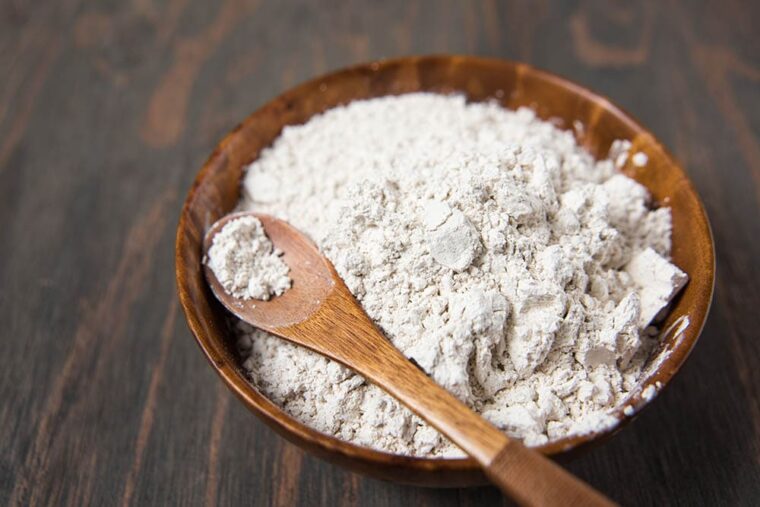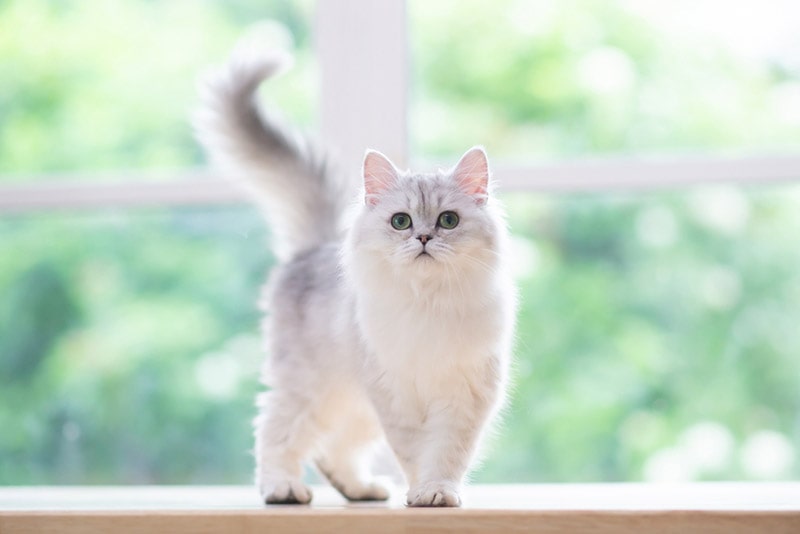
If you’re a cat owner, you may have thought of DIY solutions for killing fleas or other pests in and around your home. For pet owners, fleas and ticks are a real nuisance and must be dealt with yearly in most cases. That said, you may have heard of a product called diatomaceous earth. While it effectively kills fleas, ticks, bedbugs, and other pests, is it safe for cats? Most veterinarians advise against applying this product directly onto your cat due to possible lung damage, but if used properly, it is considered safe.
If you’ve contemplated using diatomaceous earth to kill fleas and ticks on your cat, read on to learn more about this product and its potentially harmful effects if not used properly.
Disclaimer: The information about these products has been fact-checked by one of our licensed veterinarians, but the purpose of this post is not to diagnose illness or prescribe treatment. The views and opinions expressed are not necessarily those of the veterinarian. We recommend contacting your pet’s veterinarian before using the products described.
What Is Diatomaceous Earth?
Diatomaceous earth (DE for short) is a naturally-occurring sand made from fossilized algae, known as diatoms, which are found all over the world in oceans, lakes, streams, and other waterways. Diatoms are mostly made up of a chemical compound called silica, a significant component of nature found in everything from rocks, sand, plants, and even humans.
There are two types of DE: Food grade and filter grade. Food grade is marketed as “generally recognized as safe” by the FDA and is suitable for consumption. Food grade contains crystalline silica but at a very low amount of 0.5 to 2%. In contrast, filter grade is used in industrial situations, such as water filtration systems and dynamite. Filter grade contains much more crystalline silica, which is toxic to humans, making up 60% of the product.

How Is Diatomaceous Earth Harmful to Cats?
Even though DE is safe for consumption, caution is still advised when applying it to your yard or any other area. The fine, crystalized powder in the food-grade version should not be inhaled, even though it contains only a small amount of silica. It’s advised to wear eye protection, gloves, and a facemask to prevent irritation to the eyes, skin, and lungs. Given these protective measures, you certainly do not want to apply this powder directly to your cat’s coat and skin. Cats are consistent groomers and will lick the powder off, which can cause lung irritation and, worse, lung damage.
Moreover, the product is ineffective in killing fleas when applied directly to your cat’s coat. Not only can it cause lung irritation or lung damage, but it can also cause gastrointestinal upset in your kitty.
Food grade DE is also not recommended for use on dogs’ coats, but there is more risk with cats because dogs do not tend to groom themselves as often as cats.
How Does Diatomaceous Earth Kill Fleas?
DE is unique in killing fleas because it dries up their hard exterior exoskeleton (outer shell). When fleas crawl through the fine, crystallized powder, it’s like walking through shards of glass. The fine powder is sharp enough to penetrate the exoskeleton, which sucks the moisture away and causes the fleas to die of dehydration. Fleas can succumb to the powder in as little as 4 hours.

Can I Put Diatomaceous Earth in My Cat’s Litter Box?
According to the DE website, you can safely sprinkle ¾ cup of food-grade DE mixed with a pound of kitty litter in the litter box to eliminate odors and even repel worms, larvae, or parasites in the litter box. Keep in mind that cats groom themselves, and they may lick some of the powder off their paws from the litter box. We recommend consulting your veterinarian before using DE in your cat’s litter box.
Tips for Keeping Your Cat Healthy & Safe
DE works to kill pests and creepy crawlers like fleas, ticks, bedbugs, spiders, and more. If you decide to use DE for killing these pests around your home, ensure you only treat problem areas and keep your cat and other pets away from the powder while it’s present. Keep in mind that DE is effective in killing these pests, but it will also kill beneficial creatures, such as butterflies, bees, and ladybugs.
The bottom line is to keep your cat and other pets away from the powder so they do not consume it, which means never applying it directly to your cat’s coat and skin. Also, ensure you only use food grade DE and not filter grade, as filter grade is dangerous for both humans and pets.

Conclusion
Food-grade diatomaceous earth is defined as safe for external use around cats and other pets, but you should refrain from applying the powder directly to your cat’s coat. Cats groom themselves, and if the powder is in the coat, your cat will lick it off. As a result, your kitty could develop tummy upset, lung irritation, or even lung damage.
Consult your veterinarian for more suggestions on how to safely use the product around your cat and other pets, and always use food grade for these purposes. Your veterinarian can also prescribe safe medications for killing fleas and ticks.
Featured Image Credit: Anna Hoychuck, Shutterstock







